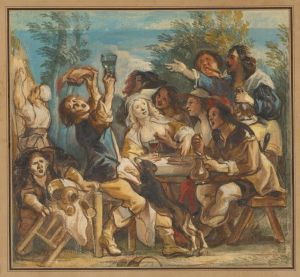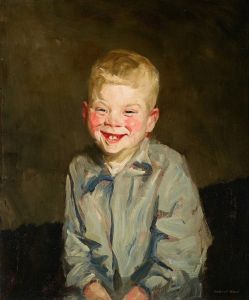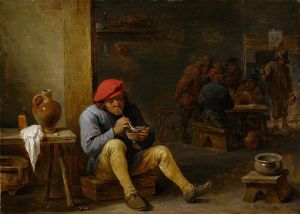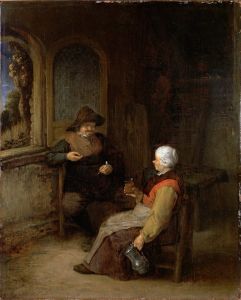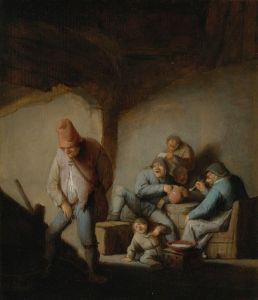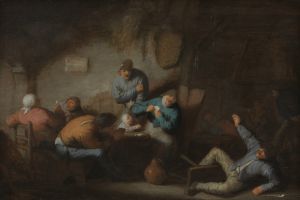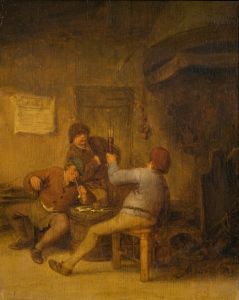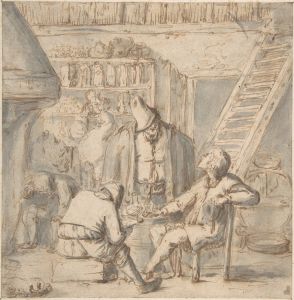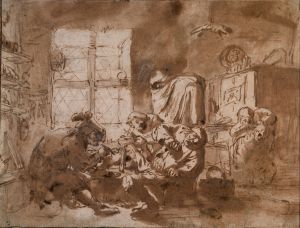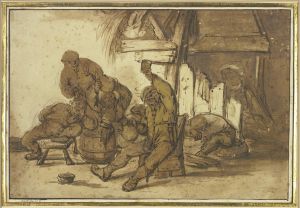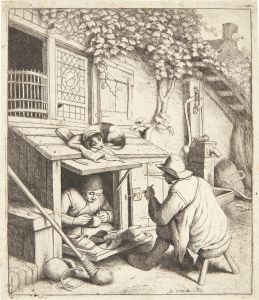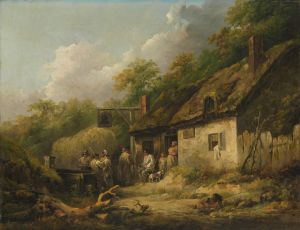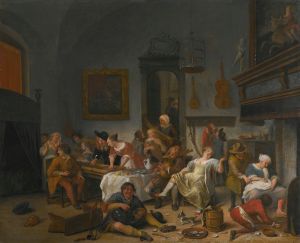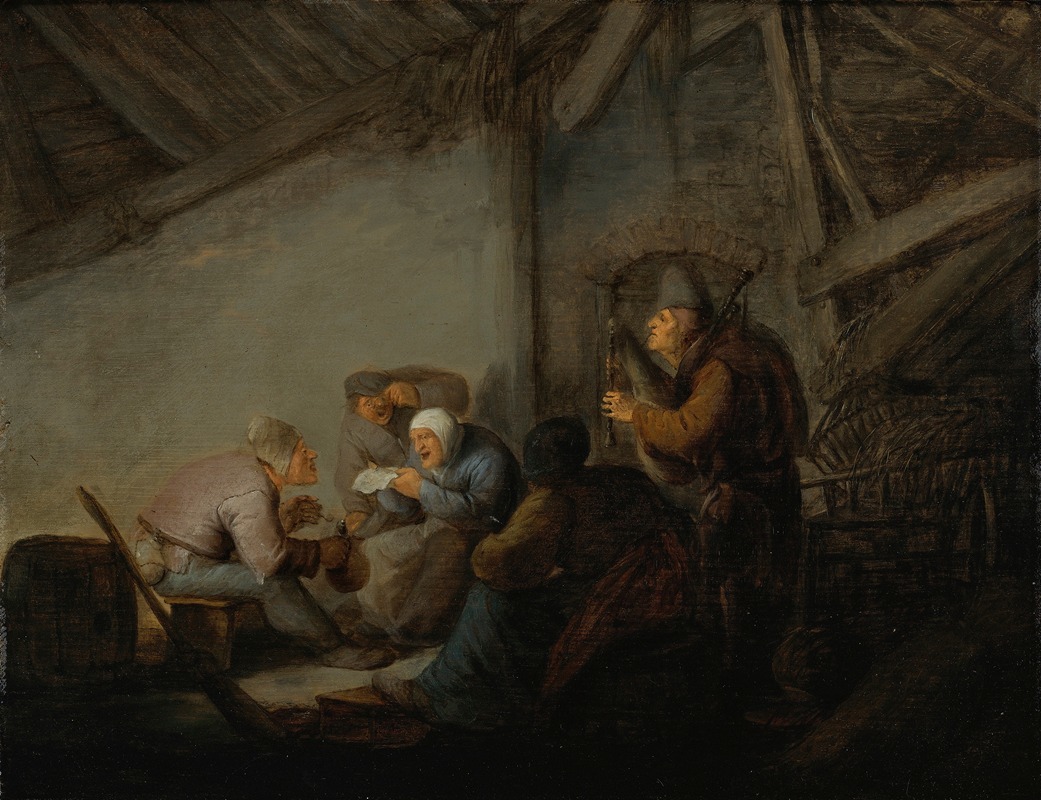
Peasants In A Tavern, Possibly A Depiction Of The Sense Of Hearing
A hand-painted replica of Adriaen van Ostade’s masterpiece Peasants In A Tavern, Possibly A Depiction Of The Sense Of Hearing, meticulously crafted by professional artists to capture the true essence of the original. Each piece is created with museum-quality canvas and rare mineral pigments, carefully painted by experienced artists with delicate brushstrokes and rich, layered colors to perfectly recreate the texture of the original artwork. Unlike machine-printed reproductions, this hand-painted version brings the painting to life, infused with the artist’s emotions and skill in every stroke. Whether for personal collection or home decoration, it instantly elevates the artistic atmosphere of any space.
Adriaen van Ostade was a Dutch Golden Age painter known for his genre scenes depicting peasant life. One of his notable works is "Peasants In A Tavern, Possibly A Depiction Of The Sense Of Hearing." This painting exemplifies van Ostade's skill in capturing the everyday life and social interactions of the lower classes in 17th-century Holland.
Van Ostade was born in 1610 in Haarlem, where he spent most of his life. He was a student of Frans Hals, a prominent portrait painter, and was influenced by the works of Adriaen Brouwer, another genre painter known for his lively depictions of peasant scenes. Van Ostade's works are characterized by their detailed observation, rich color palette, and the ability to convey the atmosphere of the settings he portrayed.
"Peasants In A Tavern" is a fine example of van Ostade's genre painting. The scene is set in a rustic tavern, a common gathering place for peasants during this period. The painting captures a moment of social interaction, with figures engaged in conversation, drinking, and possibly listening to music. The tavern setting allows van Ostade to explore themes of camaraderie and leisure among the working class.
The composition of the painting is carefully arranged to draw the viewer's eye across the scene. Van Ostade's use of light and shadow adds depth and dimension, highlighting the figures and their expressions. The warm, earthy tones of the color palette contribute to the inviting and lively atmosphere of the tavern. The attention to detail in the depiction of clothing, facial expressions, and the tavern's interior showcases van Ostade's observational skills and his ability to bring scenes to life.
While the painting is sometimes associated with the theme of the five senses, specifically hearing, this interpretation is not definitively established. The presence of musical instruments or the act of listening may suggest this connection, but without explicit evidence, it remains a possibility rather than a certainty. Van Ostade often included musical elements in his works, reflecting the role of music in social gatherings and its importance in Dutch culture.
Throughout his career, van Ostade produced numerous paintings and etchings, many of which focused on similar themes of peasant life and social interaction. His works were highly regarded during his lifetime and continue to be appreciated for their artistic merit and historical insight into 17th-century Dutch society. Van Ostade's influence extended beyond his own time, impacting later artists who sought to capture the essence of everyday life.
"Peasants In A Tavern, Possibly A Depiction Of The Sense Of Hearing" remains an important piece within van Ostade's oeuvre, exemplifying his mastery of genre painting and his ability to convey the vibrancy of peasant life. The painting is housed in various collections, where it continues to be studied and admired by art historians and enthusiasts alike.





